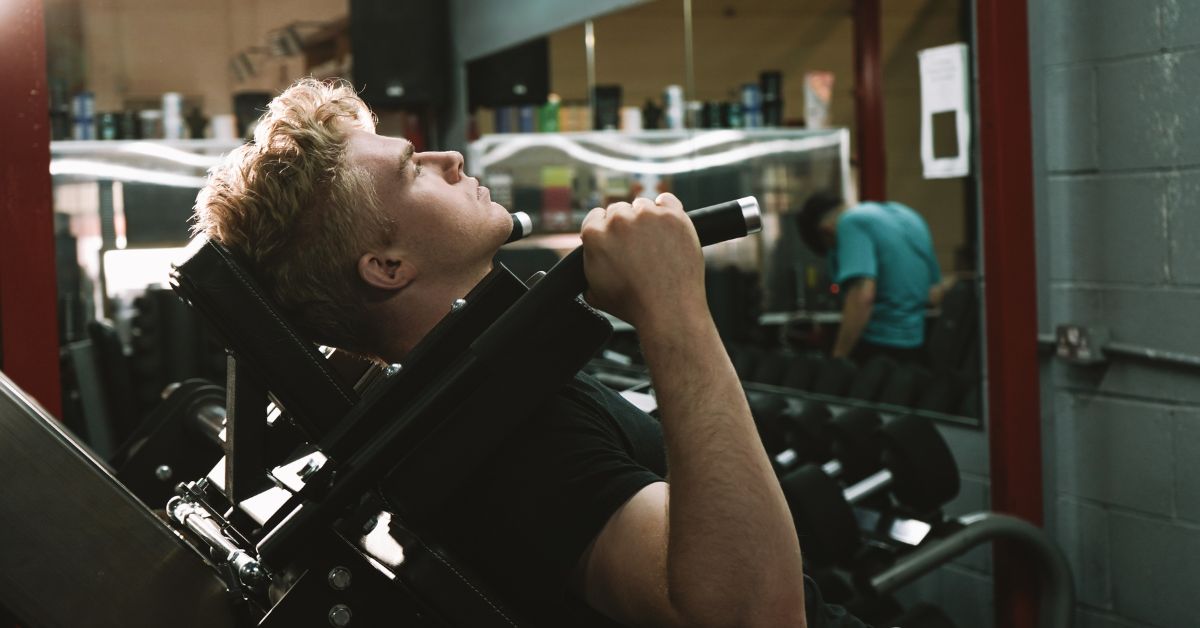
Looking for a way to torch your quads and sculpt those treetrunk legs you’ve always dreamed of? You’ve probably done your fair share of squats, but if you want to switch things up and really target your quads, it’s time to try the hack squat.
The hack squat can be done one of two ways: with a hack squat machine or with a barbell. In this guide, we’ll break down both methods for you and cover everything you need to know to perform this exercise effectively and safely.
By the time you’re done reading, you’ll be ready to conquer leg day with confidence and take your quad strength to the next level.
What is a hack squat?

The hack squat is a variation of the squat that focuses on quadriceps (quad) development. Unlike the traditional back squat, where the barbell rests on your shoulders, the hack squat shifts the load slightly behind your body. This positioning places greater emphasis on the quads and reduces stress on the lower back.
There are two main ways to perform the hack squat:
- Hack Squat Machine: This machine makes hack squats easier by guiding your movement and often includes shoulder pads for added comfort and support.
- Barbell Hack Squat: This variation involves positioning a barbell behind your legs and holding it with a mixed grip (one hand overhand, one hand underhand).
Regardless of the method you choose, this exercise involves a squatting motion where you lower your body by bending your knees and then drive back up to the starting position by extending your legs.
What muscles do hack squats work?
“Hack squats are like the secret sauce of leg day,” says Nate Osborne, certified fitness expert and CEO of Greatisfit Global Fitness. “They target your quads, glutes, and hamstrings, giving you that killer lower body burn.”
A 2022 study published in Frontiers in Physiology backs this up, finding participants saw greater strength gains with hack squats than traditional squats, no matter how often they trained.
This suggests that the machine-based hack squat, with its guided motion, might be easier to master than free-weight squats, potentially leading to faster results. So, if you’re looking to maximize your lower-body gains, the hack squat is one exercise you might want to incorporate into your leg day routine.
“When you’re under that bar, feeling the weight, you’re not just building muscle; you’re building resilience,” Osborne adds. “You gotta keep pushing the boundaries — that’s how you grow, both in the gym and in life.”
Hack squat benefits
“Hack squats are a good workout for beginners who want to strengthen their legs and lower body,” says Calum Fraser, a physiotherapist and the CEO of BodyTone Pilates Studio. “Specifically, this workout targets the calves, hamstrings, adductors, glutes, and quadriceps.”
Additional benefits of the hack squat include:
- The hack squat shifts the load behind your body, taking the pressure off your spine and letting you focus on sculpting those quads.
- Want tree-trunk thighs? The hack squat zeroes in on your quads, firing up those muscle fibers for maximum growth.
- Whether you’re using the machine or the barbell, the hack squat’s got your back (and your balance). The added support helps you nail your form and build a rock-solid foundation.
- Both the hack squat machine and barbell hack squat deliver a killer quad workout, so pick your favorite and get to work.
How to do a hack squat

“A hack squat is typically performed using gym equipment,” says Fraser. “It should be done slowly, with three seconds going up and three seconds down for each repetition.”
Here’s a step-by-step guide on how to do a hack squat with a machine:
- Adjust the machine so the shoulder pads fit snugly, and load up your weight.
- Step onto the platform, feet about shoulder-width apart, back flat against the pad. “To work your hips, place your feet higher on the platform; to work your quads, place your feet a little lower,” advises Fraser.
- Slide your shoulders under the pads and grab the handles.
- Disengage the safety levers (most machines have handles you move).
- Inhale and slowly bend your knees, lowering yourself until your thighs are parallel or just below parallel to the floor.
- Exhale and push through your heels, driving back up to the starting position. “Avoid using excessive force or speed as this could lead to injuries,” says Fraser. “Reaching a 90-degree angle with your knees is essential for doing a successful hack squat. Using more weight than you can manage will make it harder to reach and stay at that level.”
- Keep going! (Six to eight reps is good.)
Here’s a step-by-step guide on how to do a barbell hack squat:
- Place a barbell on the floor behind you. Make sure you have enough space to move around without hitting the wall.
- Stand facing away from the barbell, feet shoulder-width apart, slightly in front of the bar.
- Bend down and grab the barbell with a mixed grip (one hand over, one hand under). Keep your back straight, chest up, and knees slightly bent.
- Inhale and lift the barbell by extending your legs and hips.
- Once you’re standing tall, exhale and slowly lower the barbell back down.
- Keep hitting those reps until you reach your goal.



